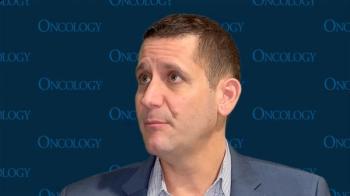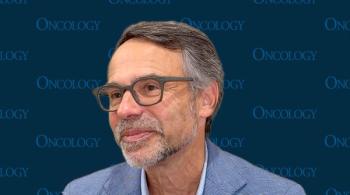
Oncology NEWS International
- Oncology NEWS International Vol 7 No 5
- Volume 7
- Issue 5
Prevention Research Needs to ‘Go Mainstream’
BETHESDA, Md--Over the next decade, Americans should put more effort into eating better and instituting chemoprevention trials to reduce cancer risks, said Peter Greenwald, MD, DrPH, acting director of the NCI’s Division of Cancer Prevention.
BETHESDA, Md--Over the next decade, Americans should put more effort into eating better and instituting chemoprevention trials to reduce cancer risks, said Peter Greenwald, MD, DrPH, acting director of the NCIs Division of Cancer Prevention.
Dr. Greenwald spoke at the American Society of Preventive Oncologys 22nd Annual Meeting, where he received ASPOs Distinguished Achievement Award. "Cancer prevention has to be attacked on both personal and public health levels," he said. "We need to build cancer prevention research into the mainstream of biomedical research institutions."
In the short term, he said, policy should emphasize reducing tobacco use, improving dietary habits, and expanding the use of early detection measures such as cancer biomarkers. Some newer preventive technologies, such as immunizing children against hepatitis B so that they are less likely to develop liver cancer as adults, are available but require a major effort for implementation.
For the years 2001 to 2010, Dr. Greenwald would like to see increased work on chemoprevention and on vaccinating high-risk populations. For instance, infection with one of several subtypes of human papilloma virus (HPV) is necessary for cancer of the cervix. Veterinarians have developed vaccines for similar viruses in cows and rabbits. Now, he said, is the time to work for a human vaccine.
"We not only need new technology," he said, "but we need to think of creative, practical, and affordable technology."
As an example, he pointed to experiments in which a gene for a hepatitis B vaccine was inserted into a potato. The only problem was that cooking the potato destroyed the vaccine. Now researchers are trying to breed a banana with the same gene to make delivery of the vaccine simple and painless.
Dr. Greenwald spoke in detail about ongoing prevention efforts against breast and prostate cancer. He said that while fat, body weight, and physical activity are all related to breast cancer, the role of dietary fat is still controversial.
Studies like NHANES II [National Health and Nutrition Examination Survey, second wave (1976-1980), conducted by the National Center for Health Statistics] and NHS [Nurses Health Study, conducted by Harvard School of Public Health] have shown that people chronically underreport calorie and fat intake by factors of one-fifth to one-third.
In the NHS, 800 kcal were "missing" from reports, equivalent to 16 g of fat--enough to throw subjects from the lowest to the highest quintile.
Furthermore, Dr. Greenwald said, "researchers cannot reliably disentangle the contributions of dietary fat, weight gain, calorie, and physical activity. But fat is the most fattening food, so a simple message to women is that fat calories and weight gain together increase postmenopausal breast cancer risk."
He also pointed to chemopreventive work with selective estrogen-receptor modulators (SERMs), like tamoxifen (Nolvadex) and raloxifene (Evista). Second-generation SERMs like raloxifene have an estrogenic effect on bone and heart, but an antiestrogenic effect on the breast.
For men, prostatic intraepithelial neoplasia (PIN) is a possible precursor to prostate cancer and appears at much younger ages than first thought. Besides indicating that prostate carcinogenesis is a long process, PIN may present an opportunity for early detection using laser microdissection of tissue samples coupled with fluorescent staining techniques.
Dr. Greenwald also suggested prostate chemoprevention trials for high-risk patients--those with PSAs higher than 4 ng/mL. "If the biopsy is negative," he said, "they can go to chemoprevention trials for a year."
Drugs for use in such trials might include DHEA (a steroid that inhibits initiation and function of tumors); oltipraz (developed originally to treat schisto-somiasis); an antiandrogen such as liazarole; 4-HPR, a retinoid; and finasteride (Proscar), which inhibits conversion of 5-alpha-reductase into the potent androgen dihydrotestosterone.
Other studies may provide clues for future research, Dr. Greenwald said. The ATBC (alpha-tocopherol, beta-carotene) Cancer Prevention Study from Finland showed a one-third drop in prostate cancer for those taking vitamin E (alpha-tocopherol).
A trial of seleniums effect on skin cancer had no effect on that disease but there were 13 cases of prostate cancer in 650 men in the intervention arm versus 35 cases in the placebo arm. "These are small numbers," he said, "but they offer important leads for deciding what to try next."
Articles in this issue
over 27 years ago
Risk Assessment: Who Should Have BRCA Gene Testingover 27 years ago
Panel Supports Approval of Label Expansion for Ceprate SC Systemover 27 years ago
NCI Office Focuses on Minority Accrual in Cancer Clinical Trialsover 27 years ago
Increased Folate Level Appears to Lower Colon Cancer Riskover 27 years ago
Cluster of Risk Factors May Predict Increased Risk of Colon Cancerover 27 years ago
Colon Cancer Prevention Fits Into Healthy Lifestyleover 27 years ago
When to ‘Walk Away’ from a Managed Care Contractover 27 years ago
Nutritional Assessment ‘Vital,’ but Still Difficult to Doover 27 years ago
Hyperthermia May Stimulate Immune Systemover 27 years ago
Ultrasound Fails to Detect Local Recurrence PostcryosurgeryNewsletter
Stay up to date on recent advances in the multidisciplinary approach to cancer.
















































































